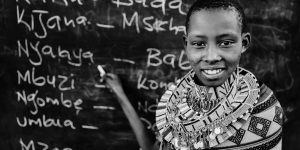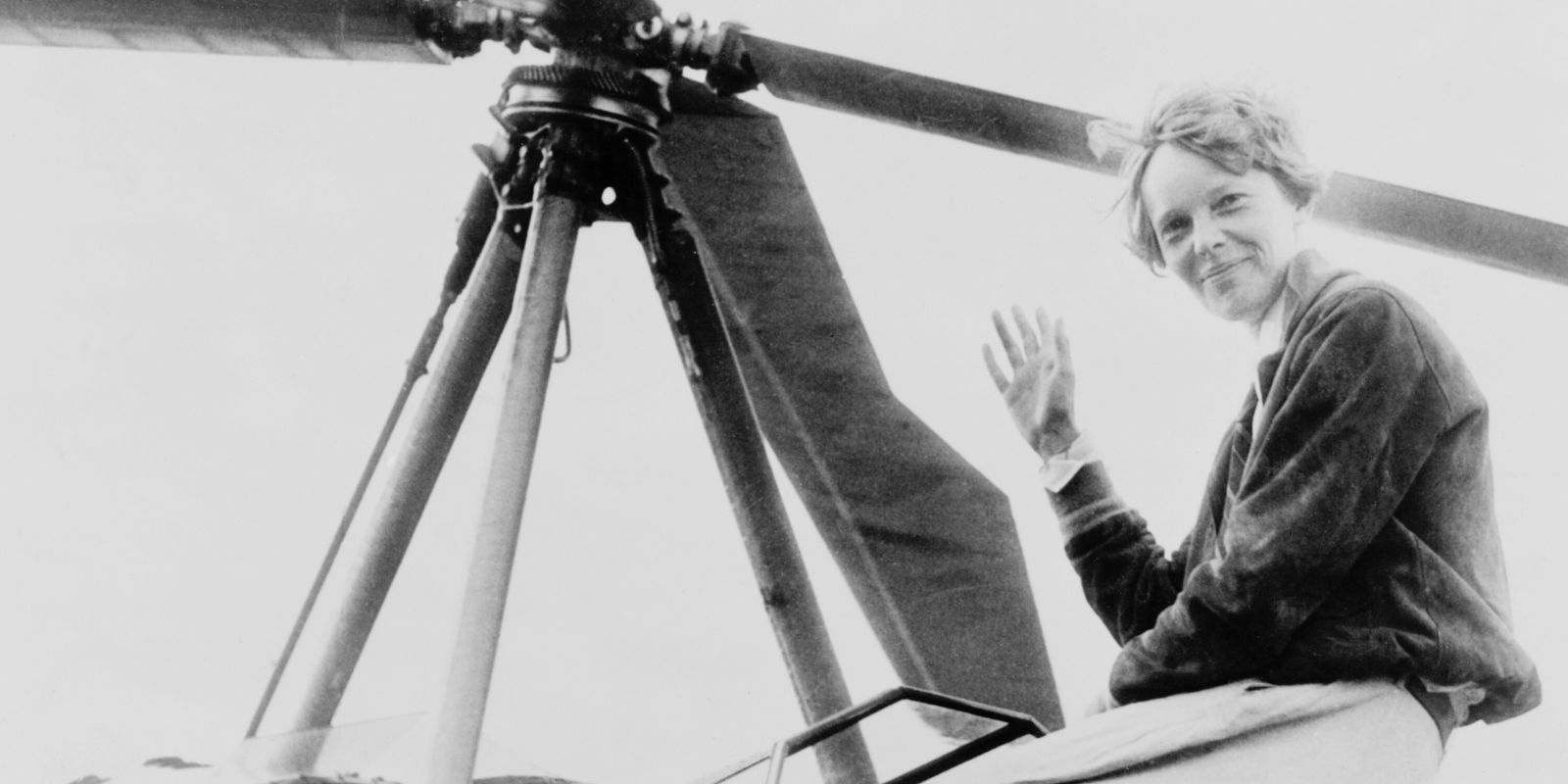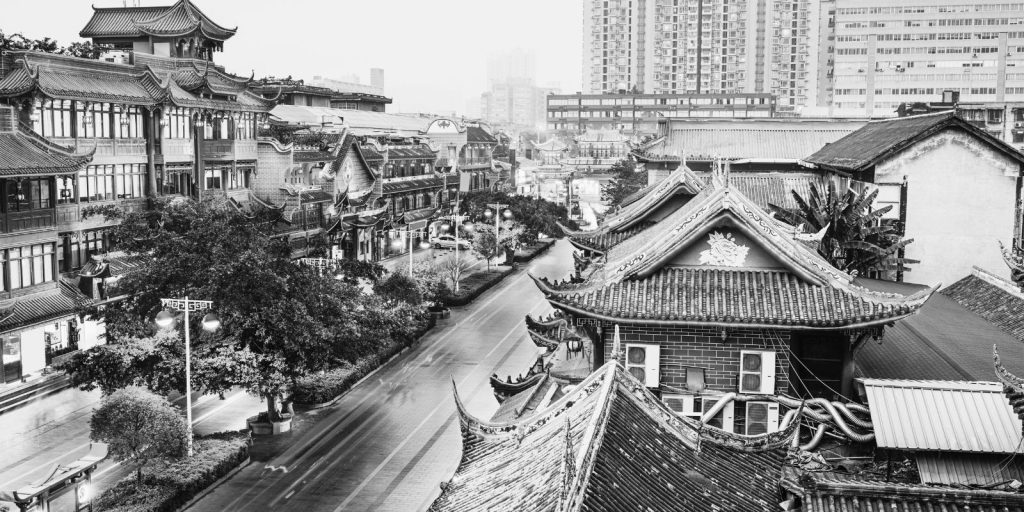World History
November 15th: The League of Nations Held Its First Meeting

What Happened On November 15th?
When The League of Nations Held Its First Meeting (1920)
The League of Nations, a predecessor to the United Nations, held its primary meeting on November 15, 1920, in Geneva, Switzerland. The organization emerged from the aftermath of World War I, with the goal of preventing future conflicts through diplomacy, cooperation, and collective security.
It aimed to provide a platform for nations to discuss and resolve disputes peacefully. The League sought to promote disarmament, protect minority rights, and address global issues such as health, labor, and human trafficking. While it faced criticism and limitations, the League of Nations laid the foundation for international cooperation and paved the way for the establishment of the United Nations in 1945.
Sherman Began Destructive March to the Sea (1864)
On this day in 1864, General William Tecumseh Sherman embarked on his infamous “March to the Sea” during the American Civil War. With Atlanta under Union control, Sherman set out on a scorched-earth campaign from Atlanta to Savannah, Georgia, aiming to cripple the Confederate forces and demoralize the Southern population.
This absurd 285-mile destructive march resulted in the destruction of vital infrastructure, industrial sites, and resources along the way. The purpose was to deprive the Confederacy of supplies, weaken their support base, and hasten the end of the war. The campaign was a turning point in the Civil War, demonstrating the devastating impact of total war tactics.
Palestine Liberation Organization Proclaimed Independent State (1988)
In a historic moment on November 15, 1988, the Palestine Liberation Organization (PLO) declared the establishment of an independent Palestinian state. The announcement came during a meeting of the Palestinian National Council in Algiers, Algeria. The PLO, led by Yasser Arafat, sought international recognition and support for the Palestinian cause.
The declaration itself was a significant step towards asserting Palestinian self-determination and gaining global recognition as a distinct political entity. It set the stage for subsequent negotiations and peace processes, shaping the ongoing Israeli-Palestinian conflict and the quest for a two-state solution.
World History
May 25th: 32 African Countries Formed The OAU Against White Rule

What Happened On May 25th?
On May 25, 1963, in the Ethiopian capital of Addis Ababa, thirty-two African countries came together to form the Organization of African Unity (OAU). This coalition was established to promote unity and solidarity among African states.
By coordinating their cooperation, they would eventually achieve a better life for the people of Africa. The leaders at this historic gathering sought to collectively address and combat the lingering influence of white rule and colonial oppression across the continent.
At the time, many African nations were still grappling with the vestiges of colonial rule, and the scars of oppression were fresh. The leaders of these 32 countries recognized that their collective strength could be a formidable force against the specter of white rule.
Nelson Mandela
Though Nelson Mandela was incarcerated on Robben Island at the time of the OAU’s formation, his influence permeated the conference halls of Addis Ababa. Mandela’s tireless efforts to dismantle apartheid in South Africa resonated deeply with the delegates. His imprisonment underscored the harsh realities of white minority rule and the urgent need for a united front against such oppression.
Ethiopia: The Symbol Of African Independence
Interestingly, the OAU’s headquarters in Addis Ababa was chosen not only for its geographical centrality but also as a nod to Ethiopia’s unique status as a symbol of African independence. Ethiopia, having successfully resisted colonization by European powers, represented the resilience and unyielding spirit of the African people.

The Influence Of Mandela’s Philosophy
Mandela demonstrated his philosophy of resistance through both peaceful and militant means. As exemplified by his leadership in the African National Congress (ANC) and its armed wing, Umkhonto we Sizwe, his strategic acumen and moral fortitude were tested.
The OAU, in many ways, was an embodiment of Mandela’s vision for a liberated and unified Africa. The coalition provided a platform for African nations to support liberation movements across the continent, offering diplomatic, financial, and military assistance to those fighting against colonial and white minority regimes.
The African Liberation Committee
The African Liberation Committee was tasked with coordinating support for liberation movements and was instrumental in the success of various anti-colonial campaigns. The OAU also adopted the African Charter on Human and Peoples’ Rights in 1981, which was a document affirming the commitment of African states to uphold human rights and fundamental freedoms.
Swahili As A Lingua Franca
The OAU promoted the use of Swahili as a lingua franca for Africa, recognizing the importance of a common language in fostering unity. Swahili, with its rich history and wide usage across East Africa, was seen as a unifying cultural element. This initiative aimed to bridge linguistic divides and enhance communication among African nations.

The OAU’s Evolution
Nelson Mandela’s release from prison in 1990 and his subsequent election as South Africa’s first black president in 1994 vindicated the efforts of the OAU and its member states. Mandela’s presidency began a new era of reconciliation and nation-building in South Africa, and his leadership continued to inspire the continent.
The African Union (AU)
The OAU itself evolved over the decades, and in 2002, it was replaced by the African Union (AU), a more robust and dynamic organization aimed at addressing the contemporary challenges facing Africa. The AU built on the foundations laid by the OAU, striving to achieve greater political and economic integration, and playing a proactive role in conflict resolution and peacekeeping.
The African Liberation Committee played a large role in supporting the PAIGC (African Party for the Independence of Guinea and Cape Verde) in its struggle against Portuguese colonial rule. This support was instrumental in the eventual independence of Guinea-Bissau in 1973.
The Role of Women In Liberation Movements
Figures such as Josina Machel of Mozambique and Winnie Mandela of South Africa were important in mobilizing grassroots support and leading the charge against colonial and apartheid regimes. Their contributions were vital to the success of the liberation efforts and demonstrated the indispensable role of women in the struggle for freedom.
World History
May 21st: Amelia Earhart Became The First Woman To Fly Solo Nonstop Across The Atlantic

What Happened On May 21st?
On May 21, 1932, Amelia Earhart made history by becoming the first woman to fly solo nonstop across the Atlantic Ocean. Taking off from Harbour Grace, Newfoundland, on May 20, she navigated through challenging weather and mechanical issues.
After 14 hours and 56 minutes in the air, she successfully landed in a pasture at Culmore, near Londonderry, Northern Ireland. Her achievement not only showcased her exceptional piloting skills but also broke barriers in aviation and gender norms of the time.
The Departure
Earhart took off from Harbour Grace, Newfoundland, in her bright red Lockheed Vega 5B. Unlike Charles Lindbergh, who had made his transatlantic flight exactly five years earlier, Earhart faced additional obstacles, including mechanical issues and adverse weather conditions.
Her plane was equipped with more advanced navigation instruments than Lindbergh’s Spirit of St. Louis, but she still relied heavily on her own skills and intuition to navigate the vast expanse of the Atlantic Ocean.
A fascinating detail about Earhart’s flight is that she carried a thermos of hot chocolate to help keep her warm and alert during the journey. Additionally, she wore a leather flying suit and a leather helmet, similar to the gear worn by World War I pilots, to protect herself from the frigid temperatures at high altitudes.

Earhart also had a compact, custom-made barometer and altimeter, which she meticulously monitored throughout the flight to ensure her altitude and pressure remained within safe limits.
The Flight Was Not Easy
Earhart’s journey was beset with numerous challenges from the outset. Strong northerly winds, icy conditions, and mechanical problems plagued her flight. Shortly after takeoff, she encountered fierce headwinds and turbulence, which slowed her progress. Also, her altimeter malfunctioned, forcing her to rely on her instincts and dead reckoning to maintain her course. Unlike Lindbergh, who flew at relatively low altitudes to avoid icing, Earhart had to contend with both ice and thunderstorms, making her journey even more perilous.
At one point, a sudden storm forced Earhart to descend to just a few hundred feet above the waves to avoid the worst of the weather. This dangerous maneuver put her dangerously close to the ocean’s surface.
Despite these harrowing conditions, Earhart pressed on. Earhart’s resilience was further tested when an exhaust manifold cracked, causing the cabin to fill with smoke. With quick thinking, she managed to ventilate the cockpit and continue the flight,
The Day She Broke Records
After a difficult journey, Earhart safely landed in a pasture at Culmore, near Londonderry, Northern Ireland, on May 21, 1932. She was greeted by a startled farmer who asked, “Have you flown far?” to which she famously replied, “From America.” At this point, she had just become the first woman to fly solo across the Atlantic.
The landing site in Ireland quickly became a place of interest. Locals commemorated her arrival by placing a marker at the exact spot where she touched down. Earhart’s arrival was also unexpected as she initially planned to land in Paris, but adverse weather conditions forced her to change course. This adaptability highlighted her exceptional navigational skills.

Earhart v.s. Lindbergh
While both Earhart and Lindbergh achieved extraordinary feats by flying solo across the Atlantic, their journeys incorporated different challenges and circumstances. Lindbergh’s 1927 flight from New York to Paris was longer, covering about 3,600 miles and taking 33.5 hours. In contrast, Earhart’s route from Newfoundland to Ireland was shorter, approximately 2,000 miles, and took nearly 15 hours.
However, Earhart’s flight was no less remarkable; she faced more severe weather conditions and mechanical issues that tested her resilience and piloting expertise.
Additionally, Earhart’s flight showed off new advancements in aviation technology that were developed after Lindbergh’s journey. Her aircraft, the Lockheed Vega 5B, was one of the most advanced planes of its time, featuring a powerful engine and improved aerodynamics. Despite these improvements, Earhart’s flight was still fraught with danger.
What Happened After
Amelia Earhart’s solo transatlantic flight inspired countless women to pursue careers in fields previously dominated by men. Earhart continued to break records and push boundaries until her mysterious disappearance in 1937 during an attempt to circumnavigate the globe. Her Lockheed Vega 5B, the aircraft that carried her across the Atlantic, is now preserved at the Smithsonian National Air and Space Museum in Washington, D.C.
In addition to her aviation accomplishments, Earhart was a dedicated advocate for women’s rights. She was a founding member of The Ninety-Nines, an international organization of female pilots aimed at providing mutual support and advancing the cause of women in aviation. Her speeches and writings consistently encouraged women to pursue their dreams and challenge societal expectations.
World History
May 12th: 87,000 Lives Taken In Sichuan Earthquake

What Happened On May 12th?
May 12th, 2008 began like any other day in China.
However, in the early afternoon, the unexpected happened.
At precisely 2:28 pm local time, a monstrous earthquake, registering a 7.9 magnitude, destroyed the Sichuan province and devastated the people.
The Disaster

Sichuan province was known for its rich cultural heritage, natural beauty, and growing economic development. More specifically, major cities within Sichuan like Chengdu were known for their innovation and environmental protection efforts.
So, when this earthquake dismantled such an impressive city, it was all the more devastating.
Now, the scale of the disaster was shocking to say the least. Officials grappled with a scary reality…
- An estimated 69,000 people perished.
- Another 18,000 vanished under the rubble, presumed dead.
- 4.8 million were left homeless.
Besides the human loss, historic landmarks and towns were reduced to rubble, while roads were sliced in half.
Why So Many Schools Collapsed

More so, a particularly tragic aspect of the earthquake involved the widespread collapse of poorly constructed schools.
In total, over 7,000 classrooms were destroyed, leaving an estimated 5,300 students dead.
This exposed the limitations of the “duck and cover” earthquake safety protocol, which wasn’t effective for buildings that might crumble.
Not only that, but reports revealed that many schools, built with substandard materials and lax construction practices, crumbled during the quake. On the other hand, nearby and sturdier buildings remained intact.
After being exposed, serious questions were raised about corruption and inadequate safety standards in public infrastructure, particularly in schools children.
In response, China implemented stricter building codes for schools and revised earthquake safety drills.
The Courage Of Lin Hao

During the earthquake, a 9 year-old boy, Lin Hao, was trapped under the rubble of his school. Despite losing 20 out of his 30 classmates, Hao remained strong.
While trying to escape through a corridor, the grounds collapsed, trapping Hao and two of his classmates.
However, Hao escaped, and he carried one of his classmates, who was unconscious, back to safety. After that, he came back to save his other classmate (also unconscious) who was stuck under the rubble.
As a child, he could have easily ran away to save himself. Instead, he showed character and saved the lives of his friends.
Two months later, Lin Hao was able to walk alongside superstar Yao Ming at the 2008 Olympics.
200,000 Landslides

The earthquake triggered a cascade of secondary disasters. Because Sichuan was in a mountainous terrain, it was particularly susceptible to landslides.
Estimates suggested that over 200,000 occurred. These landslides buried entire villages and blocked vital transportation routes, hampering rescue efforts.
The Threat Of Lake Tangjiashan

Besides landslides, the earthquake created 257 river dams. In particular, the largest of these dams blocked the flow of the Tangjiashan River, creating a dangerous natural dam.
The resulting lake threatened to overflow, potentially inundating downstream communities and posing a threat to 1.3 million people. Thankfully, Chinese engineers undertook a daring operation and safely released water from the lake. In turn, this ultimately prevented a further catastrophe.
$456.9 Million In External Donations

In the aftermath of the devastating 2008 Sichuan earthquake, the World Bank acted swiftly to support China’s recovery efforts.
They provided an initial grant of $1.5 million through the Global Facility for Disaster Reduction and Recovery (GFDRR).
These funds were used for immediate needs like emergency tents and supported technical assistance for national reconstruction planning.
The World Bank also mobilized a team of international experts with experience in post-earthquake reconstruction, who collaborated with Chinese counterparts to develop a comprehensive plan for rebuilding Sichuan.
Additionally, the World Bank offered a separate grant to assess potential chemical contamination from damaged industries affected by the earthquake.
Externally, global compassion led to massive financial support. Donations poured in from individuals, corporations, and governments around the world. Led by Germany ($31,000,000), Macau ($15,300,00), and Japan ($9,600,000), total contributions estimated to be around $456.9 million U.S. dollars.
Neighboring countries were first to provide resources for survivors, including Laos, Singapore, and South Korea.
China & Deadly Earthquakes

Because of the mountainous terrain, China has a long and unfortunate history of natural disasters. However, the deadliest of these occurred centuries ago, on January 23rd, 1556, in the Wei River Valley.
Now this tremor was so powerful that it completely eliminated a civilization. Geologists estimated that the Wei River Valley earthquake clocked in at an 8.0 magnitude, strong enough to alter the course of rivers and trigger landslides miles away.
Even though the magnitudes of both earthquakes were almost identical, the casualty numbers were massively different. With almost ten times as many casualties as the Sichuan earthquake, the death toll in 1556 exceeded 830,000 people.
What Do You Think?
Clearly, this day is life-changing for millions of people in China.
I still pray for survivors, who still deal with the pain of losing their loved ones and their homes.
Thank you, see you in the next.
-

 World History8 months ago
World History8 months agoOctober 20th: In Shock, The World Mourned Steve Jobs
-

 U.S. History7 months ago
U.S. History7 months agoOctober 26th: Alcatraz Inmates Attempted Deadly Escape
-

 Sports History7 months ago
Sports History7 months agoNovember 19th: How Pelé Scored His 1000th Goal
-

 U.S. History7 months ago
U.S. History7 months agoOctober 29th: The Day The Stock Market Crashed
-

 U.S. History8 months ago
U.S. History8 months agoOctober 1st: Henry Ford Introduced The Model T Automobile
-

 Arts & Culture8 months ago
Arts & Culture8 months agoOctober 16th: Johnny Cash Performed Live In Folsom Prison
-

 U.S. History8 months ago
U.S. History8 months agoOctober 11th: How Carter Won The Nobel Peace Prize
-

 Sports History6 months ago
Sports History6 months agoNovember 25th: The Day Diego Maradona Left the Field
